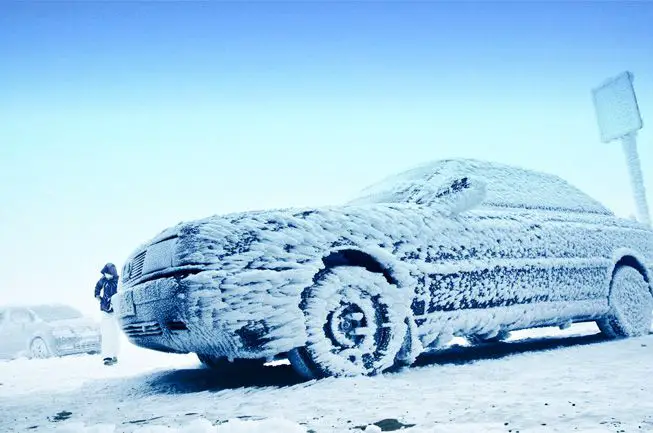If you’re a proud owner of a car, then you probably know that the worst thing that can happen is for your car to break down in cold weather. It’s not just inconvenient it’s dangerous, and it can cost a lot of money.
This is why we’re here to help you understand how long you can leave your car sitting in cold weather before it becomes an issue.
When the temperature drops below 40 degrees Fahrenheit, water freezes into ice crystals at 32 degrees Fahrenheit so if your car is parked outside in below-freezing conditions, there’s no doubt that it will be exposed to water at some point during the night or day.
What’s more, when temperatures get below freezing, even warm liquids start turning into ice crystals! So if you have any leaks or spills inside your vehicle, those liquids could freeze overnight and cause serious damage when they thaw out in warmer temperatures.
The good news is that as long as your vehicle has been started within three days, there shouldn’t be any issues with freezing temperatures. But if you notice frost on the windows, or if there are signs of frost buildup on the ground around your car.
What is the best way to store a car in cold weather?
The first is that cold weather can cause condensation to form inside the vehicle, which can lead to mold and corrosion. If you have a garage or enclosed storage, this isn’t as big of an issue, but if you’re storing your car outside, it’s important to keep an eye on it for signs of moisture.
Another thing to watch out for is freezing. If the temperature gets too low, water in the engine or fuel system can freeze and expand, causing damage. A good rule of thumb is that if you’re going to be storing your car outside in freezing temperatures, check on it every few days during the winter months to make sure it’s still okay.
How does cold weather affect the oil and lubricant levels in the engine?
If you’ve ever driven through a blizzard in your car, you know that even if you’re not driving fast enough to spin out on ice or snow, there’s a good chance that some of the snow will find its way into your engine compartment.
The same thing happens when you park your car outside in cold weather—snow and ice can get inside and cause damage if they stay there too long. You might think that snow is just wet stuff, but it’s actually very dry and abrasive it can wear down seals and gaskets, which will cause leaks over time.
Make sure you keep an eye on your oil level at all times! If there’s snow or ice in the engine compartment when temperatures drop below freezing, check the oil level every day or two until spring arrives again this way, if there’s any damage done to any seals or gaskets by moisture ingress during the winter months, you’ll spot it early on and be able to take action before it becomes too serious.
What is the ideal temperature for storing a car?
The ideal temperature for storing your vehicle is between 50 and 55 degrees Fahrenheit. This is because this range is best for preventing rusting and corrosion, which can ruin your vehicle’s body and interior components over time.
If you drive in cold weather often and want to store your car during those months, make sure you keep it somewhere warm.
How does cold weather affect the battery?
Cold weather can be hard on your car, but it’s especially tough on your battery. When the temperature drops, batteries have a harder time generating enough power to turn over an engine.
That’s why you’ll see a warning light when you start your car in cold weather: it’s telling you that the battery could freeze up if you don’t get started right away.
The exact answer depends on many factors, including the type of battery and how much of its charge is left. But regardless of what kind of battery you have in your car, it’s best to avoid leaving it sitting outside for long periods after the engine has been turned off.
How does cold weather affect the fuel system?
Cold weather can have a negative impact on the fuel system of your car. This is because cold temperatures cause the gas to condense, and as a result, you may experience difficulty starting your car.
The colder it gets outside, the more likely you are to experience problems with starting your car. If you live in an area that experiences freezing temperatures during the winter months, you may want to think about storing your car at least once a year so that it can acclimatize to these temperatures.
When storing your car for an extended period of time, make sure that it is completely dry and free from any moisture. If there is moisture present on the exterior of your vehicle when storing it in cold weather conditions.
It could lead to corrosion on metal parts such as bolts or screws which hold parts together rather than lubricating them as they should be during normal operation conditions like summer months when temperatures are warmer than normal outdoor temperatures by several degrees Fahrenheit.
Conclusion
Your car can sit in cold weather for an extended period of time. It is not recommended that you do so. If you have to leave your vehicle in the cold, make sure to warm it up before driving.
If you leave your car in the cold for too long, it could cause serious damage to your engine and parts of the car. The best way to avoid this is by always keeping your car in a garage or other warm place when it’s not being used.

